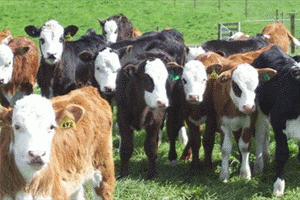
By Allan Barber*
For the first time since 2004 New Zealand and Australian beef exporters look almost certain to run out of US beef quota before the end of the year.
High kills in both countries have seen an excess of beef being processed, well ahead of the normal annual production trend.
New Zealand’s annual quota allows shipments of 213,402 tonnes, much of it manufacturing beef for the fast food industry, but also higher value prime beef cuts in the pre Christmas period. If the quota runs out, these cuts will be at risk. The excess production this year is a direct result of the high cow cull because of the downturn in dairy prices.
One processor told me the present slaughter rate was four times the normal amount.
Exporters have several strategies available to them to cope with the quota problem: buy spare quota from a qualifying exporter that has enough (one that doesn’t specialise in cull cows), find alternative markets at as good a price as possible (China continues to be very useful here), pay the normal tariff on volumes in excess of quota or hold shipments back until 2016.
MIA’s Tim Ritchie said, based on figures for the first six months, there wasn’t major cause for concern, as normal seasonal flows showed two thirds of beef were shipped in the first half of the year in line with the production profile, against 69% this year. However the continuation of the high cow kill well into August may change that picture.
Australia holds quota into the USA of 418,214 tonnes, the consequence of quota agreed at the multilateral 1995 Uruguay Round of trade talks and the 2004 Free Trade Agreement between Australia and the USA. This year for the first time since the FTA Australia appears likely to hit 85% of its quota entitlement by mid August, six weeks earlier than required to trigger an allocation system administered by the Department of Agriculture.
The present situation is the result of a coincidence of two favourable factors. The reduced cattle slaughter numbers in the USA have coincided with abnormally high cattle kills in New Zealand and Australia.
The other positive is the impact of high demand on the beef price, when traditionally US importers have seen a bow wave of product as a heaven sent opportunity to drive the price down.
New Zealand needs to take advantage of this combination of circumstances while it lasts, because one thing is certain – American cattle production will increase, bolstered by good feed conditions, and slaughter numbers will climb again within two years. Farmers and meat companies should be grateful for $6 a kilo price levels, especially assisted by a weaker NZ dollar, because they won’t be the new normal.
Just like milk at $8.40 and lambs at over $120, beef prices will inevitably drop back towards $4-$5 in time. It’s great while it lasts!
To subscribe to our weekly Rural email, enter your email address here.
Farms For Sale: the most up-to-date and comprehensive listing of working farms in New Zealand, here »
Here are some links for updated prices for
- lamb
- beef
- deer
- wool
P2 Steer
Select chart tabs
-----------------------------
Allan Barber is a commentator on agribusiness, especially the meat industry, and lives in the Matakana Wine Country. He is chairman of the Warkworth A&P Show Committee. You can contact him by email at allan@barberstrategic.co.nz or read his blog here ».

We welcome your comments below. If you are not already registered, please register to comment
Remember we welcome robust, respectful and insightful debate. We don't welcome abusive or defamatory comments and will de-register those repeatedly making such comments. Our current comment policy is here.